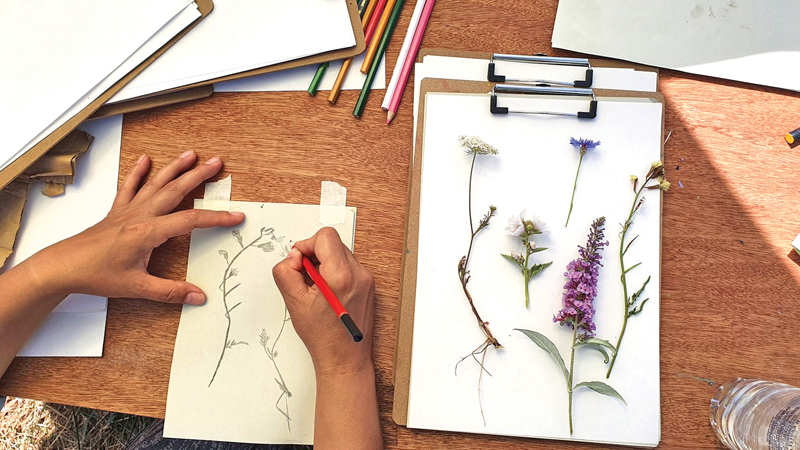There’s a quiet kind of pleasure that blooms when pencil touches paper and the outside world finds its way into a sketchbook. Unlike digital distractions or the constant noise of modern life, drawing nature is an act of stillness. It doesn’t demand attention—it asks for it. And in return, it gives back something many people don’t even know they’re missing.
Drawing nature-related scenes, leaves curling at the edges, shadows tumbling down the bark of an old tree, the exact angle of a heron’s neck is fun. It becomes a form of communion. The hand slows to the rhythm of wind in grass. Eyes shift from screen glare to the soft complexity of light. You notice things. That moss isn’t just green—it’s a dozen shades, changing by the second. A bird’s wing isn’t simply an arc; it’s a structure of purpose and grace. Observing nature through art invites you to stop taking it for granted.
Valuing the act
You don’t need to be trained. You don’t need to be good. That’s the point. The value lies in the act itself of drawing as noticing, drawing as honouring. The process does something to the body. Breathing deepens. Shoulders drop. Thoughts that normally chase themselves in circles slow down. The hand becomes an instrument not of productivity but of presence. No deadlines, no comments to chase, no hashtags. Just you, a leaf, and the line you draw to capture its curve.
This isn’t therapy dressed up in art supplies, though the effects often feel like it. It’s a return to seeing with intention. For some, it becomes meditative; for others, a creative outlet they forgot they needed. What begins as a doodle of a vine creeping up a wall turns into a full sketch of a crumbling stone arch. What started as a way to pass the time becomes a rhythm, a routine, even a refuge.
There’s a certain intimacy in drawing what grows wild. The page becomes a place where human presence doesn’t dominate but observes. And through that act of observation comes a form of respect. You see how a wildflower thrives despite cracked pavements. You realise how a tree’s asymmetry tells its own story of resilience. Drawing becomes storytelling without words, a kind of listening through line and shadow.
A change in seasons
For many, this practice leads to a growing sensitivity, not just to nature, but to life. A change in seasons no longer arrives abstractly; you feel it in your fingertips. The paper reflects not just the outside world but your internal weather. On days of restlessness, your lines are quick, impatient. On days of calm, they flow. Over time, a personal vocabulary builds—not just of sketches but of understanding. Nature becomes a mirror, and you begin to read it.
There’s no need for fanfare. You don’t need the Alps or a dramatic seascape. A potted plant on a windowsill, the shadow of a fence at sunset, the arc of a crow overhead—these are enough. The ordinary becomes luminous when you commit it to paper. In a time when experiences are so often filtered through screens, drawing nature is refreshingly analog. It brings the world back to scale. Your hand, your eye, your page.
People often chase pleasure as something fleeting, something to be seized. But the act of drawing nature shows it can be grown. It doesn’t require escape, just attention. And in that focused attention, we begin to remember that the world, for all its chaos, still offers moments of quiet beauty. So be willing to look, and willing to draw.




